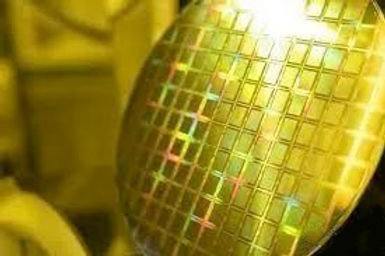CEA-Leti transfers infrared sensing technology to Lynred
- Tracy
- May 14, 2023
- 2 min read
In infrared vision, as in microelectronics, miniaturization is the driving force behind innovation. For example, compared to infrared detectors with 15 µm pixels, detectors with 7.5 µm pixels have lower cost, lower energy consumption, smaller size, and higher efficiency. Germanium window widely used in infrared detectors.
Recently, scientists at the French Atomic Energy Commission's Electronics and Information Technology Laboratory (CEA-Leti) stated that they had "overcome unprecedented technical challenges" and were able to integrate this small 7.5 µm pixel with high sensitivity Infrared sensing technology transferred to industrial mass production.

Currently, Grenoble, France-based CEA-Leti is transferring its "record-breaking" infrared sensing technology to Lynred, based in Palaiseau, France, which supplies infrared detectors to a wide range of markets. Lynred's range of infrared detectors covers the entire infrared spectrum, from shortwave infrared (SWIR) to very longwave infrared (VLWIR).
The main advantage of the new technology is its image clarity, CEA-Leti said. In an infrared detector, photons are absorbed by a semiconductor material and create a charge, which then diffuses throughout the material for a few microseconds. This phenomenon is acceptable as long as the diffusion range is smaller than the detector pixel size. However, if the charge can diffuse down to 20 µm, while the detector pixels are only 7.5 µm, the result is reduced image clarity.
In addition, Lynred wants its infrared detector to have a higher operating temperature (130 K or higher, compared with 110 K currently), as this would reduce the size and cost of the cryogenic cooling system.
Unfortunately, higher temperatures also mean that the charge spreads farther. Therefore, the CEA-Leti researchers came up with an innovative solution to this challenge. The 7.5 µm pixel is designed so that charges never reach adjacent pixels. The innovation lies not in the material (mercury-cadmium-tellurium alloy commonly found in infrared vision solutions), but in the pixel architecture itself.
The resulting performance is excellent in terms of sharpness, which is measured as a percentage of the modulation transfer function (MTF). While the MTF of a theoretical detector composed of perfect pixels cannot exceed 64%, CEA-Leti's detector can reach 55%.
"We have devised a new method to measure MTF sharpness," comments Olivier Gravrand, research director at CEA-Leti. "Instead of locally injecting photons to excite the pixels, we use a scanning electron microscope (SEM) to inject electrons. This This 'electronic brush' is much finer than traditional beams and allows for more accurate MTF measurements."
The high-performance infrared detector developed by CEA-Leti is mainly used by the defense sector because of its high resolution and image clarity, which can provide better visibility at longer distances. Lynred asserts that, to date, no other published technology has demonstrated an MTF of 55% or higher.

The CEA-Leti infrared detector can also be used in weather satellites to better monitor temperature, humidity and carbon dioxide levels in the atmosphere. Finally, it is also of interest to astrophysicists because it allows them to observe very distant stars.






Comments